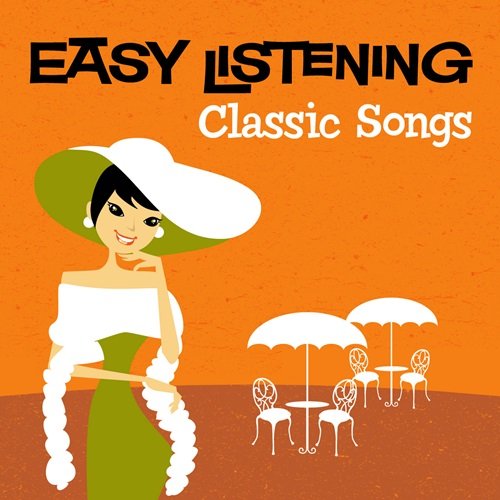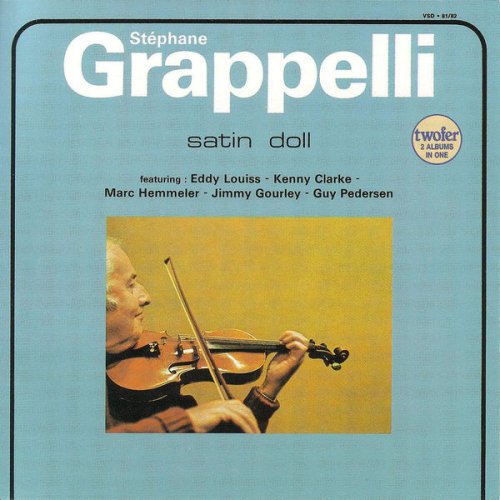Jean-Marc Aymes, Mara Galassi, Concerto Soave - Girolamo Frescobaldi: Fantasie, Ricercari & Canzoni, Fiori Musicali (2010)
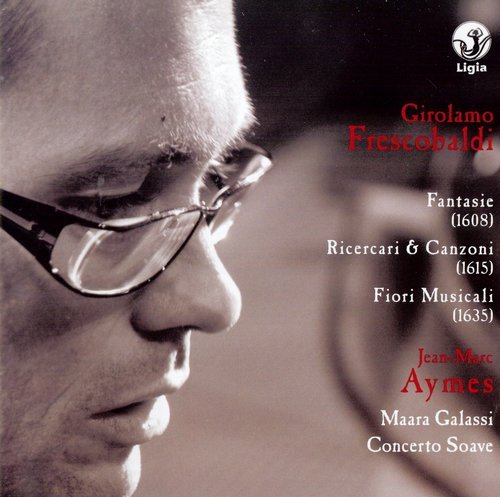
Artist: Jean-Marc Aymes, Mara Galassi, Concerto Soave
Title: Girolamo Frescobaldi: Fantasie, Ricercari & Canzoni, Fiori Musicali
Year Of Release: 2010
Label: Ligia Digital
Genre: Classical
Quality: FLAC (image+.cue,log,scans)
Total Time: 207:39
Total Size: 1.1 Gb
WebSite: Album Preview
Tracklist: Title: Girolamo Frescobaldi: Fantasie, Ricercari & Canzoni, Fiori Musicali
Year Of Release: 2010
Label: Ligia Digital
Genre: Classical
Quality: FLAC (image+.cue,log,scans)
Total Time: 207:39
Total Size: 1.1 Gb
WebSite: Album Preview
CD 1:
Il Primo Libro delle Fantasie a Quattro di Geronimo Frescobaldi ferrarese, organista. In Milano, 1608
[1] Fantasia prima, sopra un soggetto
[2] Fantasia sesta, sopra due soggetti
[3] Fantasia nona, sopra tre soggetti
[4] Fantasia decima, sopra quattro soggetti
[5] Fantasia terza, sopra un soggetto
[6] Fantasia quarta, sopra due soggetti
[7] Fantasia settima, sopra tre soggetti
[8] Fantasia undecima, sopra quattro soggetti
[9] Fantasia seconda, sopra un soggetto
[10] Fantasia quinta, sopra due soggetti
[11] Fantasia ottava, sopra tre soggetti
[12] Fantasia duodecima, sopra quattro soggetti
Recercari et Canzoni Franzese fatte sopra diversi oblighi in partitura di Girolamo Frescobaldi. In Roma, 1615
[13] Recercar Primo
[14] Canzon Terza. Secondo Tono
[15] Recercar Secondo
[16] Canzon Seconda. Primo Tono
CD 2:
[1] Recercar Terzo
[2] Recercar Ottavo, Obligo di non uscir di grado
[3] Recercar Quarto. Obligo mi, re, fa, mi
[4] Recercar Quinto
[5] Canzon Quarta. Sesto Tono
[6] Recercar Sesto. Obligo fa, fa, sol, la, fa
[7] Recercar Settimo. Obligo sol, mi, fa, la, sol
[8] Canzon Prima. Primo Tono
[9] Recercar Nono. Obligo di quattro soggetti
[10] Canzon Quinta. Nono Tono
[11] Recercar Decimo. Obligo la, fa, sol, la, re
Fiori Musicali di diverse Compositioni, Toccate, Kirie, Canzoni, Capricci, e Recercari in Partitura a Quattro utili per sonatori. In Venetia, 1635
[12]-[28] Messa della Domenica
CD 3:
[1]-[16] Messa degli Apostoli
[17]-[30] Messa della Madonna
Performers:
Jean-Marc Aymes cembalo, organ
Mara Galassi harp
Concerto Soave
Birgit Goris violin
Marie Rouquié viola
Sylvie Moquet viola da gamba
Christine Plubeau viola da gamba
This is the fifth and final volume in the Ligia series of the complete keyboard music of Girolamo Frescobaldi (1583–1643). Previous volumes reviewed in Fanfare include the Primo libro di capricci and Secondo libro di toccate (both 34:2), and the Primo libro di toccate (34:6). The present volume includes published collections from the beginning, middle, and end of Frescobaldi’s career. The Primo libro delle fantasie was published while the composer was still in Milan; it served as a kind of audition piece that eventually won him the position of organist at St. Peter’s in Rome. The Ricercari e canzoni were written at the same time as the Primo libro di toccate —at the end of Frescobaldi’s first sojourn in Rome, when his compositional powers were at their zenith. The Fiori musicali , a collection of liturgical organ music, is a product of Frescobaldi’s mature period, after he had returned to Rome from his lengthy sabbatical in Florence. The Fiori musicali can be said to have had the greatest impact on later generations: Both Johann Fux and J. S. Bach possessed copies and studied the Fiori assiduously for their contrapuntal secrets.
The free-form, improvisational component of Frescobaldi’s music—roughly speaking, the prevalent style in the toccatas and capriccios—is perhaps most familiar, but the contrapuntal element is surprisingly strong as well, as witnessed in the three collections recorded here. Remarkably, all three were published in partitura , or full score (rather than in keyboard tablature), thus preserving the independence of the part-writing. The excellent essay in the booklet, Counterpoint and Rhetoric , clarified for me how important this aspect of Frescobaldi’s music really is, and how strong its influence was on later composers as diverse as Sweelinck, the French clavecinistes and Sebastian Bach. At a time when monody and Italian opera were all the rage, Frescobaldi singlehandedly preserved the prima prattica inherited from his teacher Luzzaschi, refined it, and passed it on to later generations.
In contrast to the toccatas, where Frescobaldi was very specific in the keyboard instruments to be used, the three collections recorded here are less specific in their instrumentarium, allowing the performers a certain flexibility of choice. Jean-Marc Aymes has accordingly allotted some of the fantasias and ricercars to a mixed ensemble of violin, viola, and two gambas—quite effective. Another surprise is the use of harp; its delicate, refined voice is a refreshing change of timbre, and causes me to wonder why harp isn’t used more often in this repertoire. Aymes plays the remainder of the pieces either on the historical organ in the church of St. Maria del Carmine in Brescia, or on an unidentified single-manual Italian harpsichord.
In Fanfare 34:6, I reviewed the history-making 12-CD set of the complete keyboard music of Frescobaldi on the Tactus label. That set consists largely of reissues, some dating to the mid ’80s. I would have to say that the scales are now tipped ever so slightly in favor of Aymes’s version, for the refined playing, varied instrumentation, and sparkling recorded sound. In the Tactus version of the Fiori musicali , Sergio Vartolo engages a choir to sing the Ordinary of the Mass; Aymes has a tenor intone the opening Kyrie and Christe only—not that it’s going to sway my decision. Highly recommended. -- Christopher Brodersen
The free-form, improvisational component of Frescobaldi’s music—roughly speaking, the prevalent style in the toccatas and capriccios—is perhaps most familiar, but the contrapuntal element is surprisingly strong as well, as witnessed in the three collections recorded here. Remarkably, all three were published in partitura , or full score (rather than in keyboard tablature), thus preserving the independence of the part-writing. The excellent essay in the booklet, Counterpoint and Rhetoric , clarified for me how important this aspect of Frescobaldi’s music really is, and how strong its influence was on later composers as diverse as Sweelinck, the French clavecinistes and Sebastian Bach. At a time when monody and Italian opera were all the rage, Frescobaldi singlehandedly preserved the prima prattica inherited from his teacher Luzzaschi, refined it, and passed it on to later generations.
In contrast to the toccatas, where Frescobaldi was very specific in the keyboard instruments to be used, the three collections recorded here are less specific in their instrumentarium, allowing the performers a certain flexibility of choice. Jean-Marc Aymes has accordingly allotted some of the fantasias and ricercars to a mixed ensemble of violin, viola, and two gambas—quite effective. Another surprise is the use of harp; its delicate, refined voice is a refreshing change of timbre, and causes me to wonder why harp isn’t used more often in this repertoire. Aymes plays the remainder of the pieces either on the historical organ in the church of St. Maria del Carmine in Brescia, or on an unidentified single-manual Italian harpsichord.
In Fanfare 34:6, I reviewed the history-making 12-CD set of the complete keyboard music of Frescobaldi on the Tactus label. That set consists largely of reissues, some dating to the mid ’80s. I would have to say that the scales are now tipped ever so slightly in favor of Aymes’s version, for the refined playing, varied instrumentation, and sparkling recorded sound. In the Tactus version of the Fiori musicali , Sergio Vartolo engages a choir to sing the Ordinary of the Mass; Aymes has a tenor intone the opening Kyrie and Christe only—not that it’s going to sway my decision. Highly recommended. -- Christopher Brodersen

![Trøndelag Big Band - A Big Band Narrative (2026) [Hi-Res] Trøndelag Big Band - A Big Band Narrative (2026) [Hi-Res]](https://www.dibpic.com/uploads/posts/2026-01/1767966351_dxbyhtouifgdb_600.jpg)
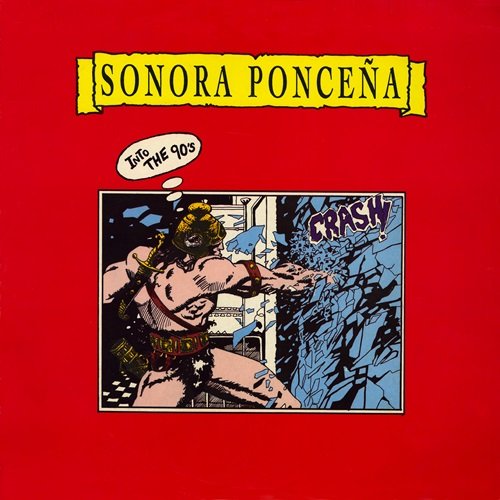
![Jazztick - Master Tetraforce (2026) [Hi-Res] Jazztick - Master Tetraforce (2026) [Hi-Res]](https://www.dibpic.com/uploads/posts/2026-01/1767974742_cover.jpg)
![Addison Frei - Live At Montreux 2018 (Live) (2026) [Hi-Res] Addison Frei - Live At Montreux 2018 (Live) (2026) [Hi-Res]](https://img.israbox.com/img/2026-01/09/zr7s2n9ecu1zq9vypf4y39cv1.jpg)
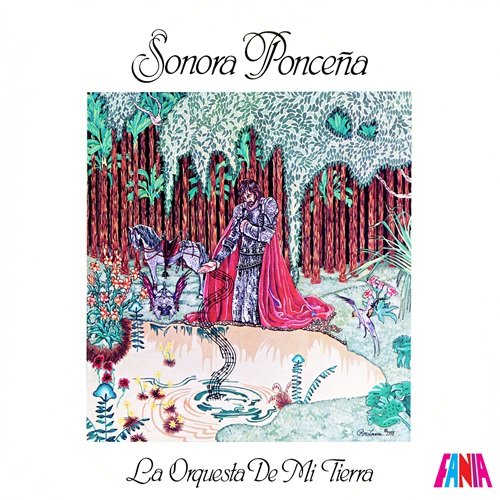
![Quadro Nuevo - Inside The Island (2025) [DSD256] Quadro Nuevo - Inside The Island (2025) [DSD256]](https://www.dibpic.com/uploads/posts/2026-01/1767895346_folder.jpg)
